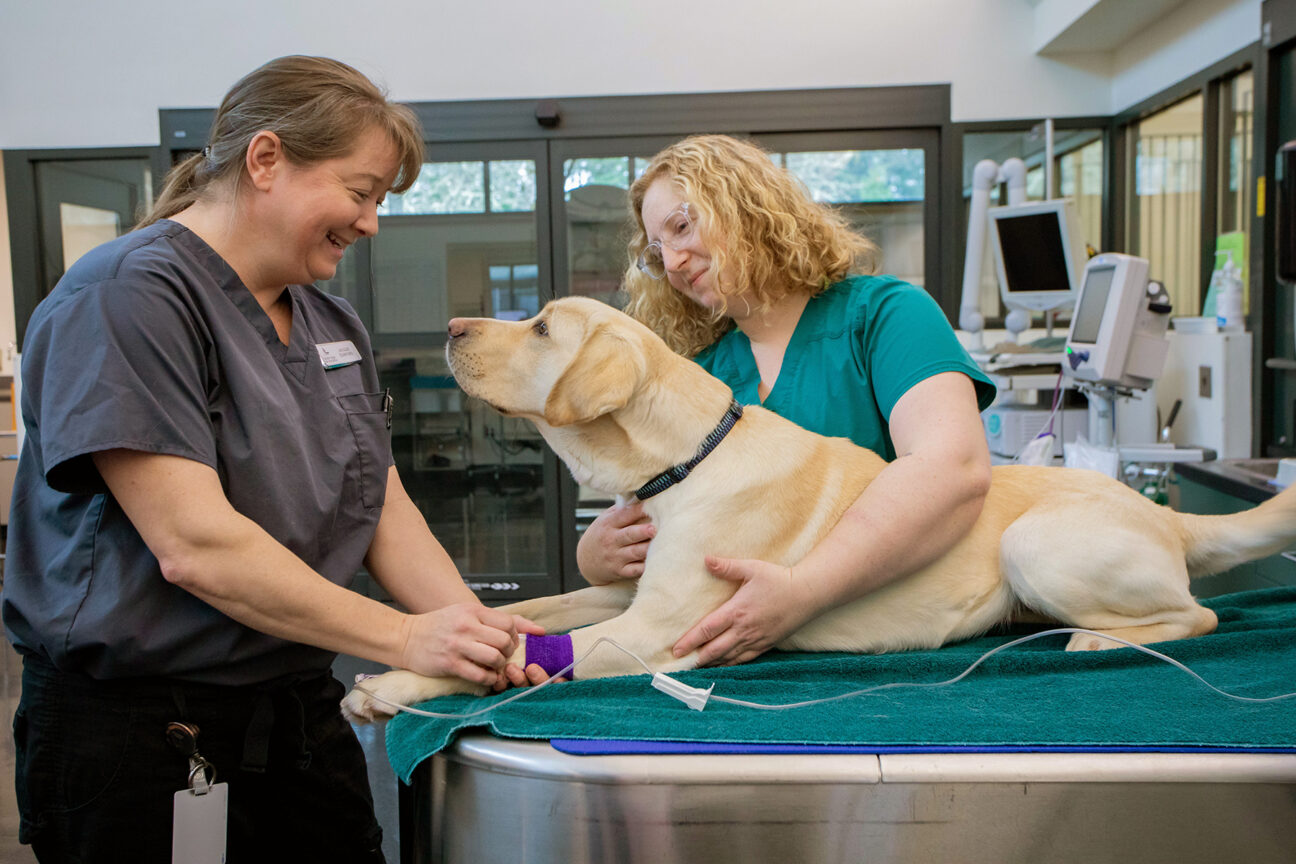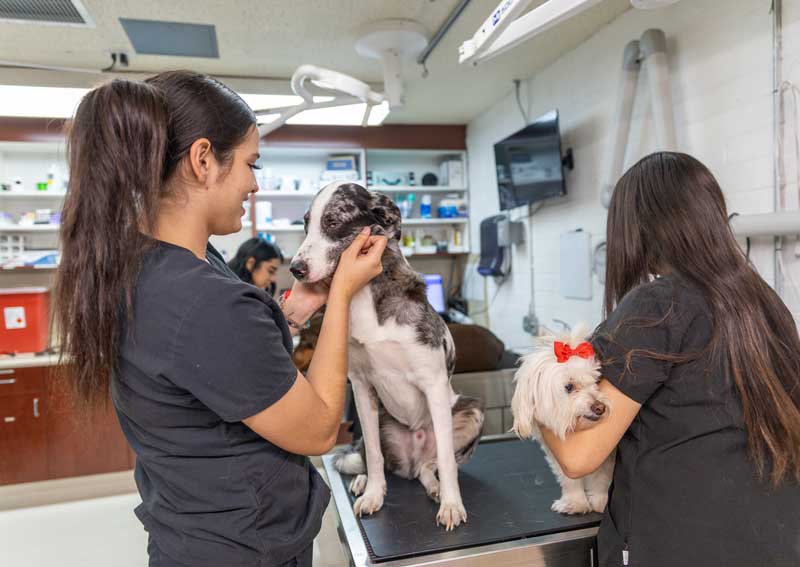Why Having a Trusted emergency vet Matters for Every Responsible Pet Owner
Why Having a Trusted emergency vet Matters for Every Responsible Pet Owner
Blog Article
Everything About Vet Surgical Procedure: Comprehending the Value of Professional Look After Your Pet dogs
Vet surgical procedure is a crucial part of pet dog medical care. It incorporates different procedures, from routine elective surgical treatments to urgent treatments. Recognizing the ins and outs of these surgical procedures can aid family pet owners make informed decisions. The prep work, execution, and recovery stages are important for making certain the health of animals. With proper expertise, proprietors can navigate the complexities of vet care. What variables should be taken into consideration before an animal undergoes surgical treatment?
Sorts Of Vet Surgeries
When an animal calls for medical intervention, understanding the numerous sorts of vet surgical treatments can help pet proprietors make educated decisions. Veterinary surgical treatments can be broadly classified into three primary types: optional, urgent, and emergency surgical treatments. Optional surgical treatments, such as spaying or neutering, are intended procedures that are not quickly serious. Urgent surgeries, like those for foreign body removal, should be executed soon however are not dangerous in the moment. Emergency surgeries, such as those resolving serious injury or internal bleeding, are vital and require instant attention.Additionally, surgical procedures can differ in complexity, ranging from minimally intrusive laparoscopic procedures to more substantial open surgeries. Each sort of surgical treatment carries its own threats and healing processes. Comprehending these categories allows pet dog owners to participate in purposeful conversations with vets, bring about much better results for their cherished family pets.
Getting ready for Your Pet's Surgical procedure
Planning for a family pet's surgical procedure involves a thorough list to assure all basics are covered. Efficient communication with the vet is crucial for understanding the procedure and any type of necessary pre-operative actions - tplo surgery for dogs. In addition, having clear post-operative treatment directions will help proprietors supply the very best assistance for their recuperating animals
Pre-Surgery Checklist Essentials
Assuring a smooth medical experience for an animal needs careful preparation and focus to detail. A pre-surgery checklist is crucial for animal owners to adhere to. Confirming the set up surgical procedure date and time is vital. Proprietors need to additionally confirm that their family pet has actually fasted according to the vet's directions, normally for 8-12 hours before surgical treatment. Gathering essential medical records, consisting of inoculation background, is crucial for the vet's testimonial. It is additionally recommended to prepare a comfortable area in your home for the pet dog's healing after surgery. Owners must have a strategy for transport to and from the vet clinic, making sure that the family pet is safe and comfortable throughout the trip. Complying with these steps can substantially enhance the surgical experience.
Interacting With Your Veterinarian

Effective interaction with the veterinarian is crucial for a successful surgical experience for family pets. Owners should be prepared to discuss their family pet's medical history, including any type of pre-existing conditions, drugs, and allergies. This details assists the veterinarian evaluate risks and tailor the medical strategy accordingly. In addition, pet dog proprietors should ask inquiries concerning the procedure, anesthesia, and expected results to guarantee they totally comprehend the process. Making clear any type of uncertainties can alleviate anxiousness for both the pet dog and the owner. It is also crucial to interact any kind of behavior changes or problems observed in the family pet leading up to the surgical treatment. Ultimately, clear dialogue fosters depend on and collaboration, making sure that pet dogs receive the most effective possible treatment throughout their medical trip.
Post-Operative Treatment Recommendations
After discussing the procedure with the vet, pet owners ought to concentrate on post-operative care instructions to promote a smooth recovery for their pets. These instructions typically consist of keeping track of the surgical site for indications of infection, such as inflammation or discharge. Family pets might require to be maintained calm and constrained to stop too much movement that can interfere with healing. Pain monitoring is important, so proprietors must comply with the vet's assistance on carrying out medicines. Furthermore, nutritional restrictions might be advised to prevent stomach distress. Regular follow-up appointments are essential to guarantee correct recovery and deal with any kind of worries. By sticking to these post-operative treatment guidelines, family pet proprietors can greatly contribute to their pet's recovery and general health.
The Surgical Process Explained
The surgery for family pets includes important actions that guarantee their safety and security and recovery. Pre-surgery prep work are important for decreasing threats, while post-operative care standards play an important role in promoting healing. Recognizing these parts helps pet dog owners browse the medical experience better.
Pre-Surgery Preparations
Prior to a family pet undergoes surgical treatment, several essential preparations need to take area to guarantee a secure and effective procedure. Initially, a detailed veterinary examination is necessary to examine the pet's overall health and determine any type of potential dangers. This might consist of blood tests, imaging, or other diagnostics. The vet will certainly likewise talk about anesthesia options customized to the animal's specific needs. Furthermore, pet dog owners are typically advised to keep food and water for a defined time before surgical treatment to lessen the danger of difficulties during anesthetic. It is essential for proprietors to give a complete case history, consisting of any kind of medicines or allergic reactions, making certain the medical group has all essential info. Correct communication and adherence to pre-surgery standards can greatly enhance the result of the procedure.
Post-Operative Treatment Guidelines
Correct post-operative treatment is necessary for making certain a pet dog's recovery following surgical treatment. After the treatment, family pets should be kept an eye on very closely for any kind of indications of problems, such as extreme blood loss, swelling, or unusual habits. It is necessary to comply with the veterinarian's guidelines relating to drugs, consisting of discomfort relievers and antibiotics. Pets must be maintained in a quiet, comfortable atmosphere to minimize stress and anxiety and promote recovery. Restricting activity is vital; short, leashed walks may be essential, yet leaping or running must be avoided. Normal follow-up consultations must be arranged to evaluate the recovery procedure. Furthermore, the medical site needs to be kept clean medicanimal and completely dry, with any indicators of infection reported to a veterinarian quickly. Sticking to these standards boosts recovery end results.
Anesthesia and Discomfort Administration
Reliable anesthesia and pain administration are important components of veterinary surgical treatment, making sure that family pets stay comfortable and secure throughout the treatment. Veterinarians assess each animal's individual needs, considering elements such as age, weight, health and wellness status, and the sort of surgical procedure being performed.Anesthesia procedures normally include a mix of pre-anesthetic medicines, induction representatives, and inhalant anesthetics, permitting precise control over the animal's degree of consciousness. Monitoring during surgical procedure is essential; veterinarians constantly observe crucial indications to resolve any potential issues promptly.Pain monitoring methods might involve opioids, non-steroidal anti-inflammatory medications (NSAIDs), and local anesthetics, tailored to the animal's details scenario. This complex technique aids decrease discomfort and promotes a smoother surgical experience. By prioritizing reliable anesthetic and discomfort management, veterinary experts improve the overall welfare of animals undergoing surgical treatments, guaranteeing they get the highest standard of treatment.
Post-Operative Care and Healing
Adhering to surgery, the focus shifts to post-operative treatment and recuperation, which is crucial for guaranteeing a pet dog's secure go back to normal activities. Throughout this period, family pets require a silent, comfortable environment to help recovery. Owners need to very closely check their animals for any type of indicators of pain or uncommon behavior.Veterinary standards typically consist of particular instructions connected to drug management, injury care, and nutritional modifications. It is important to follow these suggestions to decrease complications and advertise healing. Pets might require to be limited from energetic activities, such as running or leaping, throughout their healing period (animal emergency care bellingham).Regular follow-up consultations with the vet permit surveillance of the family pet's development and prompt modifications to the care strategy. Providing emotional support and companionship can also enhance a pet's recovery experience, aiding to ease stress and anxiousness. On the whole, persistent post-operative care plays a significant role in attaining an effective recovery
Recognizing Complications After Surgical Treatment
Just how can family pet proprietors identify issues after surgical treatment? Understanding of specific indications is important for making sure the wellness of pets during healing. Common signs consist of too much swelling, soreness, or discharge at the surgical site, which may signify infection. Furthermore, consistent pain, shown by grumbling or reluctance to relocate, must trigger immediate attention. Modifications in appetite or water consumption can also show issues; a decrease in these habits might signify discomfort or distress.Moreover, pet proprietors need to check their pet dogs for any kind of uncommon habits, such as lethargy or difficulty breathing, as these can be signs of significant issues. Throwing up or diarrhea adhering to surgical procedure might require immediate vet evaluation. Recognizing these difficulties early can significantly affect an animal's recuperation procedure, highlighting the relevance of alertness and prompt communication with a vet for any type of worrying signs.
The Function of Veterinary Professionals in Surgical Care
Vet specialists play an essential duty in ensuring the safety and success of procedures for pet dogs, especially following surgical treatment you could look here when keeping track of and care are vital. These experts include vets, veterinary service technicians, and support personnel, every one of whom contribute specialized skills to the surgical process.Before surgery, vets carry out comprehensive assessments to evaluate the family pet's health, ensuring that any kind of hidden conditions are managed. During the treatment, the surgical group provides anesthesia, maintains sterile environments, and keeps track of key signs, very important for reducing risks.Post-operative care is equally significant; veterinary experts observe for issues, handle discomfort, and guide owners on recovery practices. Their expertise allows them to acknowledge early indicators of distress or infection, ensuring prompt treatment. Eventually, the joint efforts of vet specialists in medical treatment cultivate a secure environment, promoting the well-being of pets throughout the surgical journey.

Frequently Asked Concerns
Just how Do I Pick the Right Vet Specialist for My Pet?
Choosing the ideal veterinary doctor includes researching certifications, reviewing testimonials, and evaluating the facility's atmosphere. It is necessary to assess resource the surgeon's experience with particular procedures and their interaction style when deciding.
What Prevail Misconceptions About Veterinarian Surgeries?
Typical misconceptions about veterinarian surgeries include beliefs that they are always dangerous, unneeded, or for emergency situations. Numerous animal proprietors undervalue the advantages of preventative treatments and the ability associated with veterinary medical treatment.
Just How Much Will My Pet's Surgical treatment Cost?
The price of an animal's surgical treatment can differ significantly based upon elements such as the type of treatment, the veterinarian's experience, and geographic area (emergency vet). Generally, expenditures vary from a couple of hundred to a number of thousand dollars

Can My Pet Eat Prior To Surgical Procedure?
Before surgical procedure, it is generally recommended that family pets avoid from eating for a specific duration. This fasting helps in reducing the threat of problems during anesthesia. Owners ought to consult their veterinarian for specific directions customized to their family pet's requirements.
What if My Family Pet Has Pre-Existing Health Conditions?
When a family pet has pre-existing health and wellness conditions, it's vital for the vet to examine these elements before surgical treatment. This assessment assurances appropriate preventative measures are taken, lessening risks and optimizing the animal's total security throughout the treatment.
Report this page